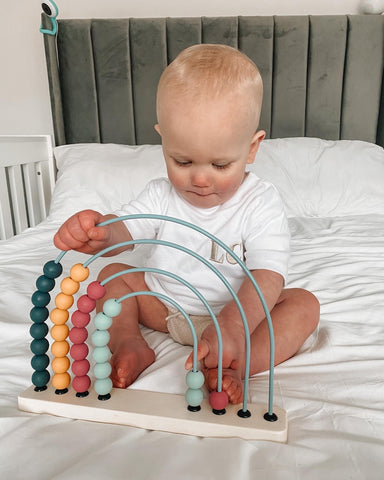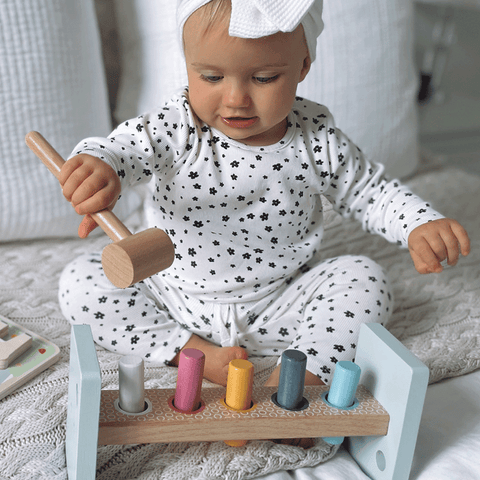
Everything You Need To Know About Montessori Toys
Montessori parenting is a growing trend in family homes around the globe, with many mums and dads favouring this relaxed, nurturing and freeing approach to their child’s development. The Montessori mantra ‘follow the child’ is particularly key in play, where open-ended toys give kids the chance to take the lead in their own learning. To find out more, check out our quick-read guide on everything you need to know about Montessori toys.

What Is Montessori?
In 1907, Italian physician Maria Montessori developed a revolutionary style of education that embraced free and independent learning (within limits) for all ages. The Montessori method is about respecting children’s natural curiosity and interests, inspiring them to make their own creative choices, while also learning from the big wide world around them.
Our guide explores some of your most frequently asked questions about Montessori toys, from why they’re so popular to how many you’re recommended to have in a Montessori playroom.

What are Montessori toys?
There are several core features that align a toy with the Montessori theory, these include:
- Simplicity
- Educational
- Natural materials
- Realistic
- Open-ended
- Fosters independence
- Sensory stimulation
What is special about Montessori toys?
Montessori toys encourage hands-on learning through play; they cultivate a natural curiosity, boost independent thinking, support sensory development, and help to improve kids’ focus and concentration. What’s more, Montessori toys are made from high-quality natural materials and they’re built to last, making them a cost-effective option and more environmentally friendly than plastic alternatives.

How is Montessori different from traditional toys?
The Montessori method of education is all about giving children the tools and independence to learn at their own pace, whereas traditional styles focus on a more formulaic teacher-student approach. If you want to create a Montessori playroom, look for toys that focus on one skill at a time, promote free play, and get kids thinking for themselves. Avoid overstimulating toys with lots of flashing lights, sounds and buttons - less is more when it comes to Montessori!
What are examples of Montessori toys?
Some of the best Montessori toys include things like wooden bricks, stacking rainbows, shape sorters, animal figures, abacuses, climbing arches, sensory blocks and more! We have a collection of beautiful Montessori wooden toys created to inspire, excite and educate littlens from birth.
Why are Montessori toys so simple?
Minimising distraction is a fundamental part of the Montessori approach, so these toys tend to be very simple in terms of looks and what they do. Montessori toys are designed to help children focus on learning one specific skill at a time, such as slotting the right shape into the right hole or stacking one brick onto another without it toppling over. This is believed to aid deeper learning and development.
Why are there no plastic toys in Montessori?
Montessori favours toys made from natural materials like wood, metal, cotton and glass for a few reasons. Unlike plastic, these materials inspire a connection to nature and the real world, while the different textures offer a sensory experience and encourage exploration. They’re also more durable, eco-friendly, and free from the toxic chemicals you find in lots of plastic toys.

Why don't Montessori toys have colour?
They do! It’s a common misconception that Montessori toys must have that natural wood look. Montessori welcomes colour but does prefer softer, more muted tones than the bright primary colour palette you often see on plastic toys. This is to create a more calming environment for kids, enhancing their concentration and avoiding overstimulation. However, even a rainbow-shaded toy can be Montessori if it’s made from natural materials and promotes learning, discovery and experimentation.

How many Montessori toys should a child have?
Montessori toy rotation is a simple but effective strategy that involves rotating toys in your toddler’s playroom. The idea is to arrange 8-10 Montessori toys on a low shelf that your littlen can reach, then swap it around with other toys every couple of weeks. Switching things up and giving kiddos the chance to choose from their toys encourages independent play, boosts their confidence and reduces any risk of toy boredom!
